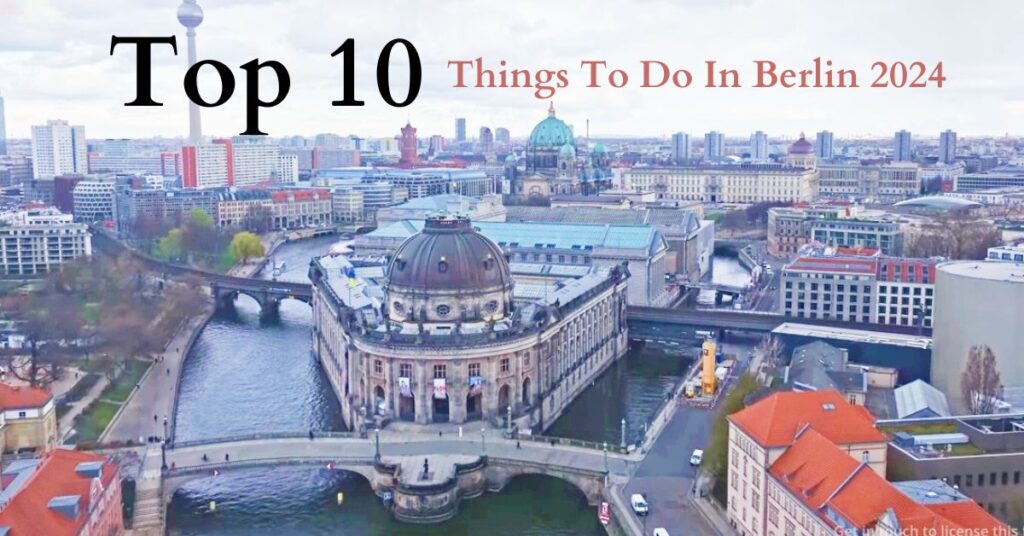Discover Berlin’s enthralling blend of history and modern charm with our handpicked list of the “Top 10 Things to Do in Berlin.” Discover the stories behind famous landmarks like the Berlin Wall and the Brandenburg Gate, immerse yourself in the vibrant arts scene at the East Side Gallery, and savor the tantalizing array of culinary delights ranging from traditional German delicacies to international gastronomy. Berlin has something for everyone, whether you enjoy history, culture, or adventure.
1) the Brandenburg Gate

The famous Brandenburg Gate in Berlin, Germany, is a neoclassical triumphal arch that dates back to the 18th century. Originally situated on an old city gate, it marked the starting point of the road leading to Brandenburg an der Havel.
Designed by Carl Gotthard Langhans, this magnificent gate stands tall at 26 meters and spans a width of 65.5 meters. Constructed between 1788 and 1791, it serves as a powerful symbol of German unity and a reminder of the nation’s history. Initially a symbol of peace, it unfortunately became a symbol of division during the Cold War.
The gate showcases intricate details and boasts five passageways, with the Quadriga sculpture adorning its top. Following the fall of the Berlin Wall in 1989, it transformed into a symbol of the reunification of East and West Germany.
Visitors have the opportunity to explore the gate from both sides and at different times of the day. Originally named the Peace Gate, it underwent restoration in the 1950s and has since become a beloved tourist attraction, representing the unity of the German people.
2) The Berlin Wall and East Side Gallery
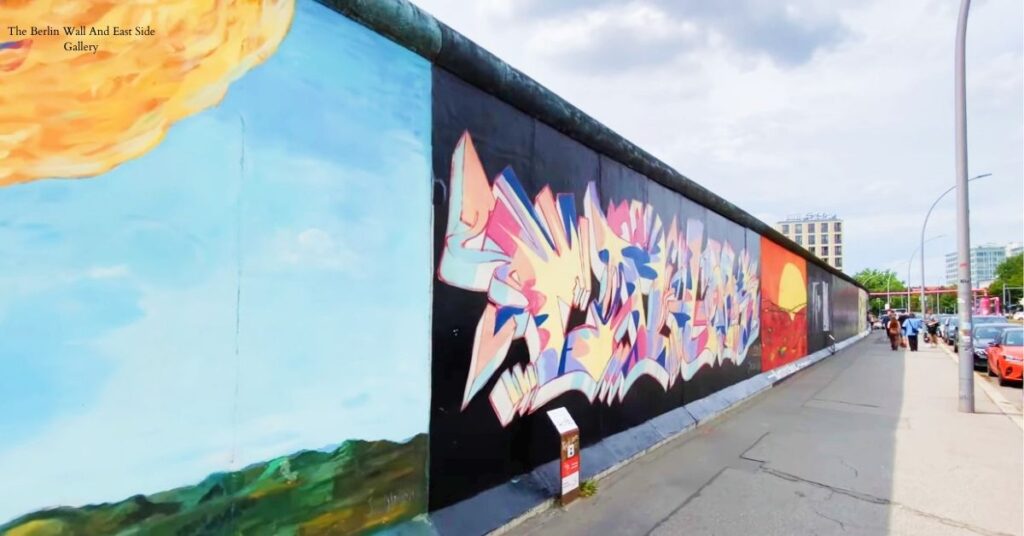
Berlin’s East Side Gallery is an incredible outdoor art exhibition that showcases more than 100 murals from artists all around the world. These stunning artworks depict the Cold War era and the clash between communism and democracy.
Stretching along the beautiful Spree River for 1.3 kilometers, the gallery stands as a powerful tribute to freedom, unity, and the indomitable human spirit. Among the notable murals are Dmitri Vrubel’s “The Fraternal Kiss” and Birgit Kinder’s “My God, Help Me to Survive This Deadly Love.” The gallery is diligently preserved, with regular restorations to maintain its authenticity.
Visitors can delve into the history of the Wall through informative plaques and guided tours, gaining valuable insights into the stories behind the artists’ creations. The East Side Gallery serves as a symbol of Berlin’s commitment to honoring its past while embracing a future filled with togetherness, creativity, and liberation. It is no wonder that both the Berlin Wall and the East Side Gallery attract countless tourists, who also explore the wall’s history at the nearby Berlin Wall Memorial.
3) Museum Island
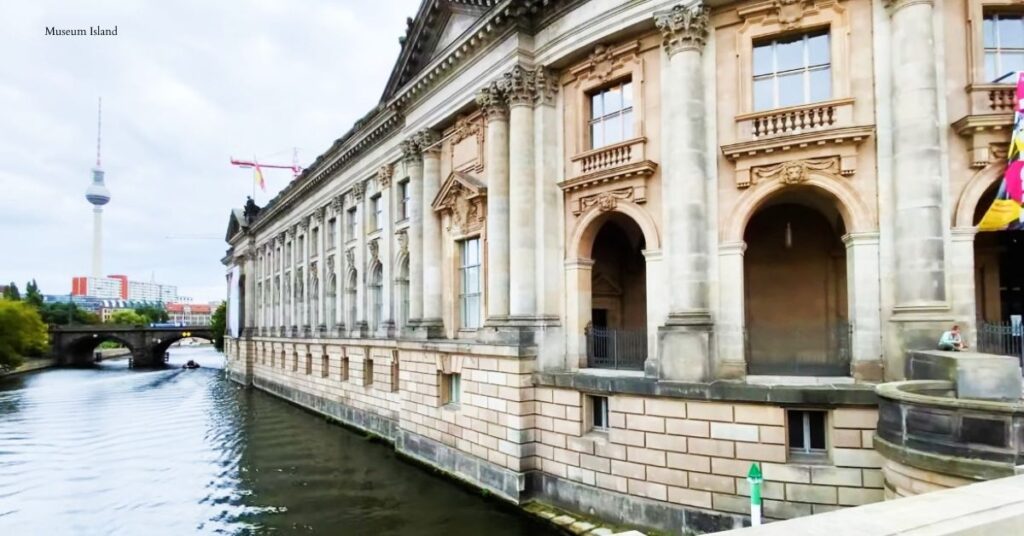
Museum Island, a UNESCO World Heritage Site in Berlin, Germany, features five renowned museums showcasing a diverse collection of art and artifacts.
The Five Museums:

To fully enjoy your visit, consider purchasing a day pass that grants access to all five museums. Museum Island stands as a testament to Berlin’s commitment to preserving and celebrating its rich cultural heritage.
[i] The Altes Museum (Old Museum):
Established in 1830, the Altes Museum showcases a remarkable assortment of Greek and Roman antiquities, including the famous Pergamon Altar and the Ishtar Gate.
[iI] The Neues Museum (New Museum):
After undergoing extensive restoration work, the Neues Museum reopened in 2009. It houses collections of Egyptian art and prehistoric antiquities, including the iconic bust of Nefertiti.
[III] The Alte Nationalgalerie (Old National Gallery):
This neoclassical building is home to a collection of 19th-century European art, featuring works by renowned artists such as Monet, Renoir, and Manet.
[IV] The Bode Museum:
Dedicated to sculpture and Byzantine art, the Bode Museum boasts an extensive collection of sculptures from ancient Greece and Rome, as well as medieval and Renaissance works.
[V] The Pergamon Museum:
The Pergamon Museum is an architectural marvel, showcasing ancient structures like the Pergamon Altar and Market Gate of Miletus, along with impressive collections of Islamic art and Near Eastern antiquities.
4) Checkpoint Charlie
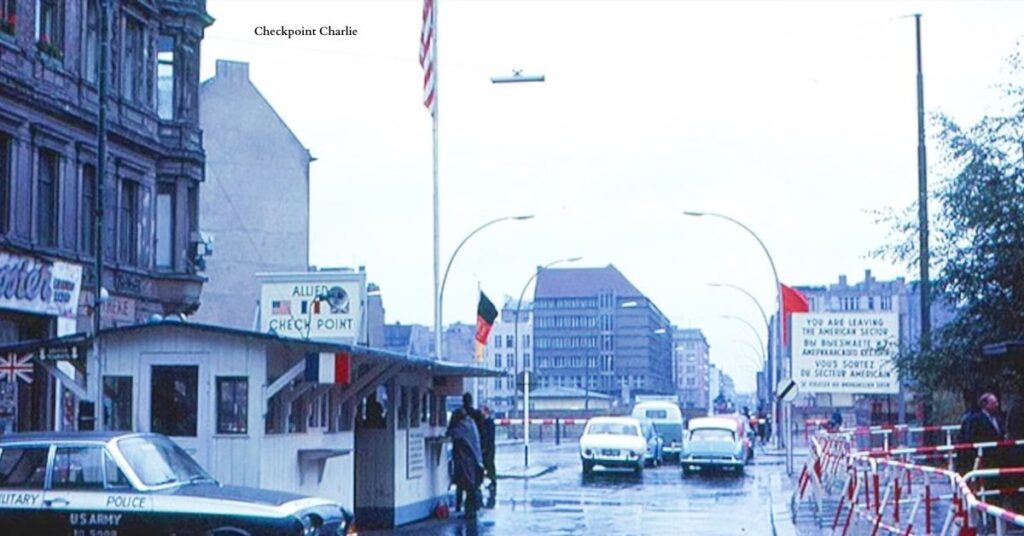
Checkpoint Charlie, located at the intersection of Friedrichstraße and Zimmerstraße in Berlin, held great significance as a crossing point during the Cold War. It derived its name from the NATO phonetic alphabet, specifically the third letter, and came to symbolize the division between the communist and capitalist worlds.
The construction of the Berlin Wall in 1961 transformed the checkpoint into a focal point of intense geopolitical tensions. The chilling standoff between American and Soviet tanks in October 1961 served as a stark reminder of the brinkmanship that defined the Cold War era.
The Checkpoint Charlie Museum, also known as the Mauermuseum, offers a comprehensive overview of the history of the Berlin Wall, including escape attempts and the broader context of the Cold War. The museum also recounts the daring escapes made by East Berliners and the diplomatic standoffs that unfolded during this tumultuous period.
Today, the area surrounding the checkpoint has evolved into a vibrant district, bustling with museums, cafes, and historical markers. It attracts both history enthusiasts and tourists alike.
5) Tiergarten Park
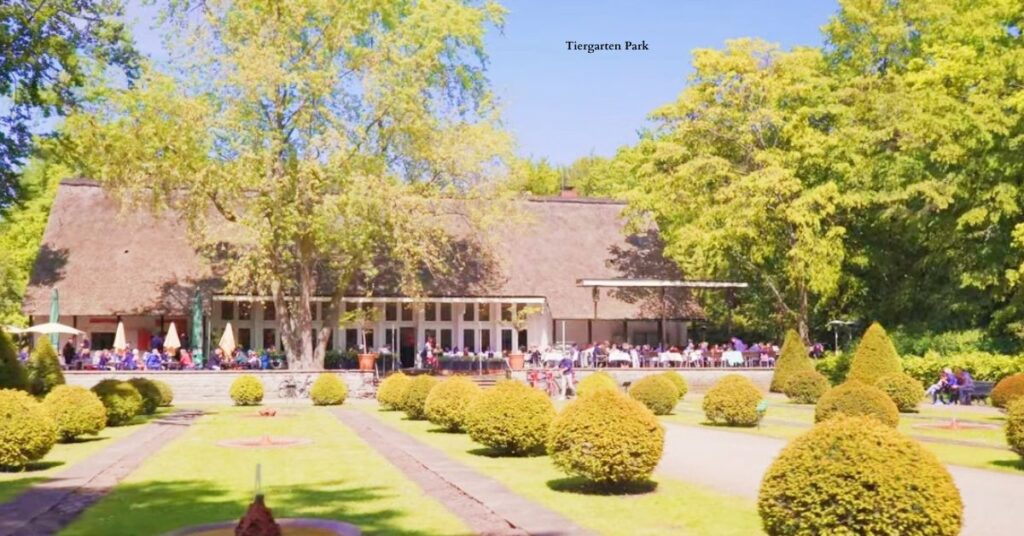
Tiergarten Park in Berlin is Germany’s largest inner-city park and Europe’s third largest. It has a long history dating back to the 16th century and is a popular tourist and Berliner destination.
The park is open 24 hours a day, 7 days a week, and is home to a variety of trees, flowers, and wildlife. There is no admission fee. Walking or biking through Tiergarten Park, having a picnic, visiting attractions such as the Brandenburg Gate, the Siegessäule, and Tierpark Berlin, and swimming in the park’s lakes are all popular activities.
Tiergarten Park is a tranquil escape from city life, conveniently located between iconic landmarks such as the Brandenburg Gate and the Berlin Zoo. The park is dotted with lush greenery, winding pathways, tall trees, and open spaces, creating a natural beauty atmosphere.
6) The Reichstag Building
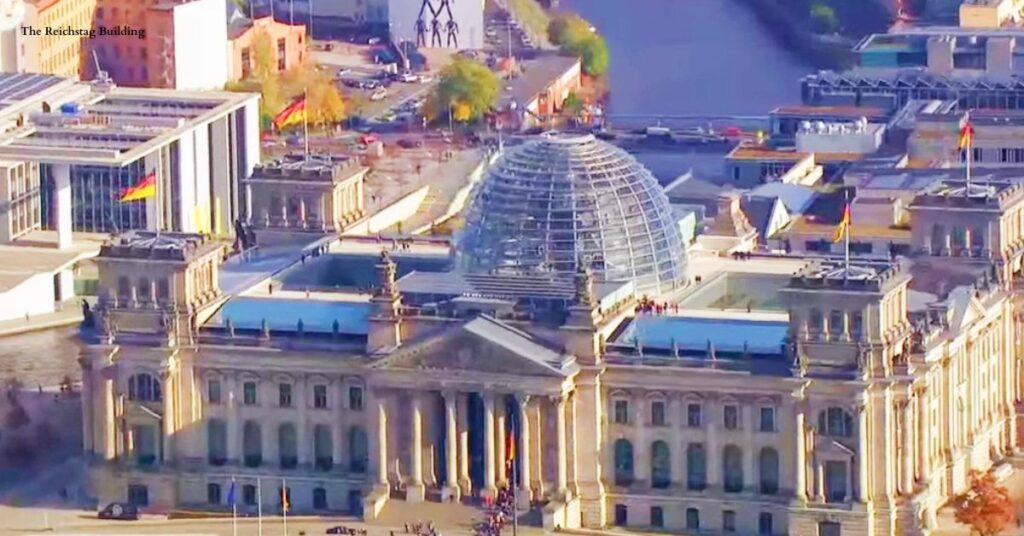
The Reichstag Building, an architectural gem from the 19th century located in Berlin, stands as a powerful symbol of German democracy and serves as the headquarters for the German Parliament, known as the Bundestag. Crafted by the talented British architect Norman Foster, this magnificent structure boasts a neo-Renaissance facade adorned with a breathtaking glass dome that provides visitors with sweeping vistas of Berlin.
Throughout its existence, the Reichstag Building has borne witness to pivotal moments in German history, such as the collapse of the German Empire, the ascent of the Nazi regime, and the reunification of Germany. Following extensive restoration efforts after World War II, it became the official residence of the West German Bundestag.
However, it was after the fall of the Berlin Wall in 1989 that the Reichstag Building truly found its purpose as the home of the German Parliament. Visitors have the opportunity to explore this remarkable edifice through guided tours or at their own pace, aided by complimentary audio guides available in various languages.
Additionally, the rooftop terrace, accessible to the public during regular opening hours, treats guests to awe-inspiring views of iconic landmarks such as the Brandenburg Gate, the Berlin Cathedral, and the picturesque Tiergarten park.
7) the Holocaust Memorial

The Holocaust Memorial in Berlin serves as a memorial to the six million Jews who died during the Holocaust. The memorial consists of 2,711 concrete stelae arranged in a grid-like pattern to represent the loss of individuality as well as the magnitude of the tragedy.
The Information Center, located beneath the field, offers a comprehensive understanding of the Holocaust’s historical context through photographs, documents, artifacts, and multimedia presentations. Visitors can gain profound insights into the atrocities committed and the Holocaust’s long-term impact.
The Holocaust Memorial reminds visitors of the dangers of hatred and intolerance, encouraging them to reflect on the past and actively strive for a future free of discrimination and violence. It provides a place for quiet reflection and personal reflection.
8) Spree River boat tour
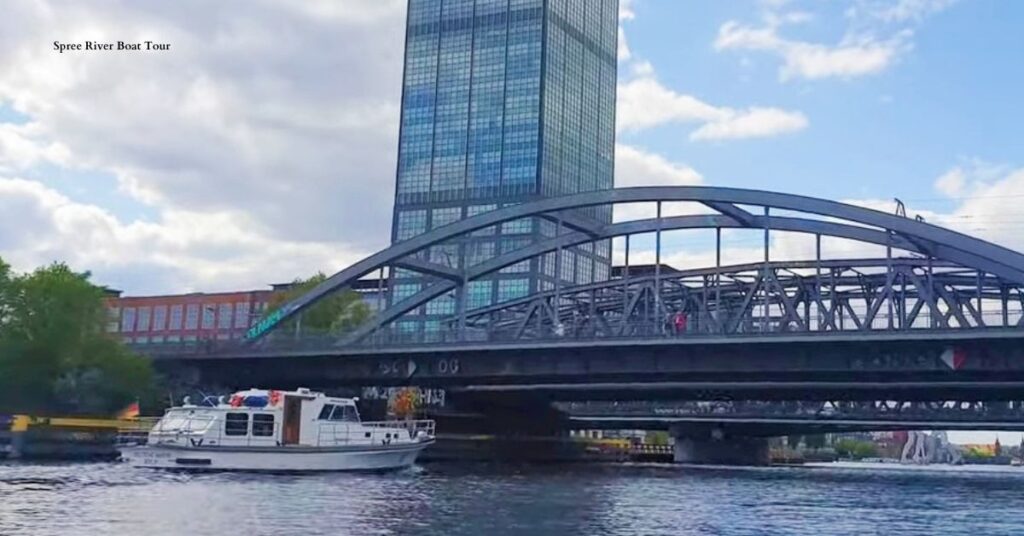
On a captivating Spree River boat tour, discover Berlin’s vibrant neighborhoods and serene landscapes. Admire iconic landmarks such as the Brandenburg Gate, the Reichstag Building, and the Berlin Cathedral, which represent German unity and triumph.
The Spree River winds through a variety of neighborhoods, providing a glimpse into the city’s dynamic personality. Pass through historic Nikolaiviertel and modern districts such as Friedrichshain and Kreuzberg, which are known for their art scenes and nightlife. Tiergarten Park, a sprawling green oasis with diverse flora and fauna, is a great place to get away from the city’s hustle and bustle.
Classic sightseeing tours, leisurely cruises with stunning panoramic views, and themed tours exploring specific aspects of Berlin’s history, such as the Cold War or the Third Reich, are available for a variety of interests and durations.
9) Visit a traditional Berliner restaurant
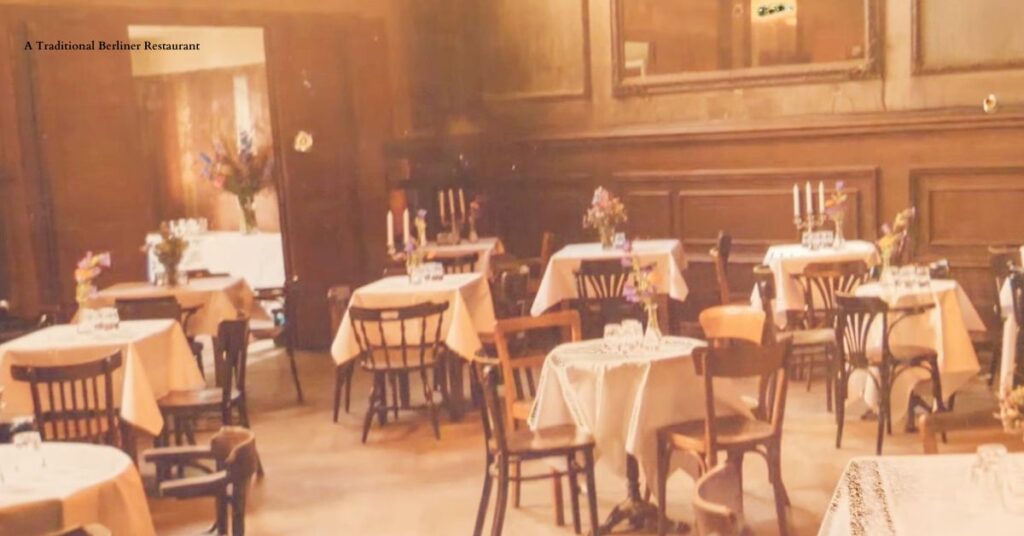
Berlin’s gastronomic landscape is a must-visit for those interested in the city’s rich heritage and culture. Traditional eateries offer a distinctive culinary journey, featuring iconic dishes like currywurst, Eisbein, and Königsberger Klopse.
Seafood enthusiasts can indulge in the Prussian delicacy of Königsberger Klopse, served with creamy mashed potatoes. Desserts like Pfannkuchen, filled with fruit preserves or quark, are available for the sweet tooth. Berliner Weisse, a refreshingly light and sour beer, complements the flavors of the meal.
The food scene also offers a contemporary array of dishes, with many restaurants putting a modern twist on traditional recipes. Vegetarians and vegans can enjoy plant-based interpretations of timeless favorites. Traditional Berliner restaurants exude a warm and welcoming atmosphere, often housed in historic buildings with charming interiors.
10) shopping at the KaDeWe department store
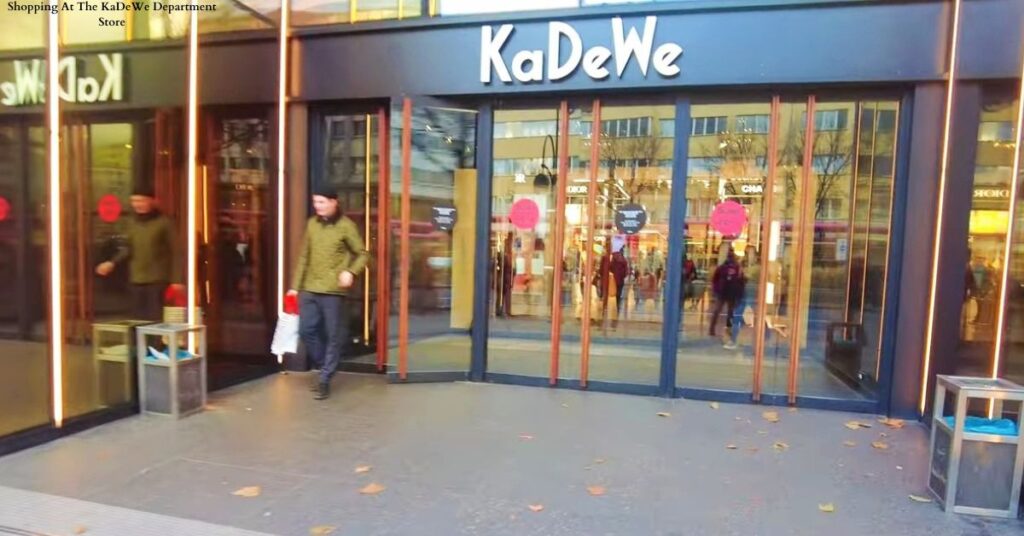
KaDeWe, Berlin’s iconic department store, is a shopping paradise with over 60,000 square meters of retail space spread across eight floors. It houses luxury fashion brands such as Chanel, Louis Vuitton, and Dior, catering to every taste and budget.
KaDeWe offers a diverse range of products beyond clothing, including beauty products, gourmet delicacies, books, and homeware. The store also has restaurants and cafes for refueling between shopping trips, and it hosts a variety of events and exhibitions throughout the year.
Since its opening in 1907, KaDeWe has played a significant role in shaping Berlin’s fashion scene and remains a popular tourist and local destination. The historical significance of the store adds another dimension to the shopping experience.
FAQs
-
What significant events will take place in Germany in 2024?
Berlin will take center stage in Europe in 2024 as it prepares to commemorate two captivating occasions. During the summer, the Olympic Stadium will serve as the venue for five matches and the grand finale of the UEFA European Championship 2024.
-
Which season is best for traveling to Berlin?
Though you may visit Berlin at any time of year, the spring (April–May) and autumn (September–October) are especially lovely. There are lots of activities and festivals taking place, the weather is pleasant, and there are fewer people around.
-
In Berlin, where should I stay?
There are many different neighborhoods in Berlin, each having a distinct charm of its own. While Kreuzberg, Mitte, and Prenzlauer Berg are well-liked tourist destinations, there are plenty of other fantastic areas to discover.
-
How can I plan for a trip to Berlin in 2024?
Start by making an itinerary of the main sites, museums, and activities to ensure a well-planned visit. For the most recent details on opening hours, admission costs, and any travel restrictions, check out guidebooks, local tourism websites, and internet travel resources.
-
Where are the best spots to take in Berlin’s colorful society?
Explore local markets, go to live music events, visit neighborhoods like Kreuzberg and Prenzlauer Berg, and indulge in the varied culinary scene to get a taste of Berlin’s culture. Don’t pass up the chance to interact with the vibrant artist community in the city.
-
Do activities suitable for families go on in Berlin?
Obviously! Berlin is home to a number of family-friendly attractions, including the DDR Museum, LEGOLAND Discovery Centre, and Berlin Zoo. Look for kid-friendly displays or special events.
-
How do I simply explore Berlin?
Berlin’s public transport system, which includes the U-Bahn and S-Bahn trains, buses, and trams, is quite effective. Go about the city on a bike, which is a well-liked and environmentally beneficial choice, or consider getting a Berlin Welcome Card for unrestricted travel within the city.
-
What are some of Berlin’s must-try local foods?
Berlin’s food scene is known for its wide range. Traditional foods like Döner kebab, schnitzel, and currywurst are not to be missed. Look for handcrafted delicacies and fresh veggies in your neighborhood markets.
-
Can I go to places connected to the Berlin Wall’s history?
Yes, you are able to tour historical locations connected to the Berlin Wall, such as the Berlin Wall Memorial, Checkpoint Charlie, and East Side Gallery. These places shed light on the fragmented history of the city.
-
Are there any interesting day tours or adventures going on from Berlin?
Think about taking day visits to neighboring locations like the Sachsenhausen Concentration Camp Memorial or Potsdam, which is well-known for Sanssouci Palace. These outings offer a more profound comprehension of the history and culture of the area.
